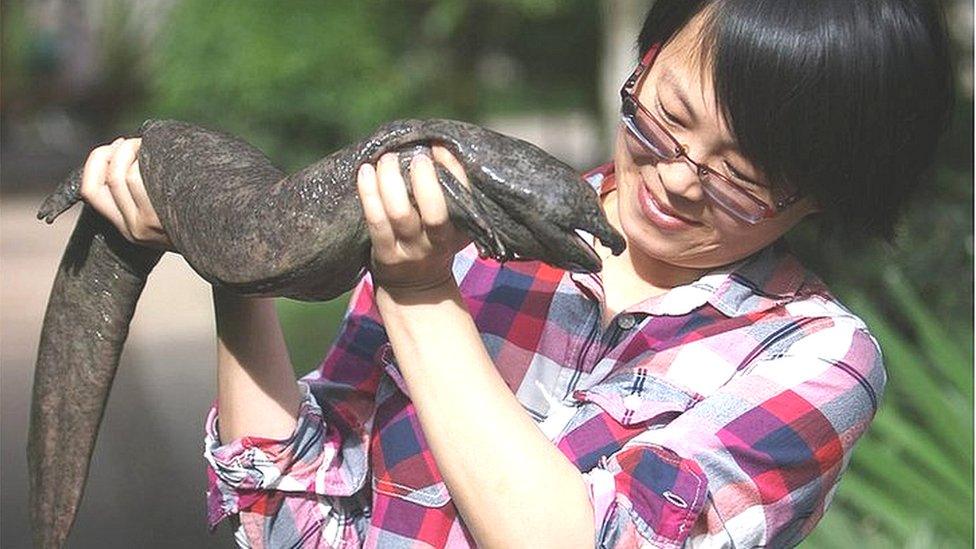'Living fossil' giant salamander heading for extinction
- Published

Jing Che of the Chinese Academy of Sciences lifts a giant salamander
The world's largest amphibian is in "catastrophic" decline, with possibly only a handful left in the wild.
Field surveys carried out over four years suggest the Chinese giant salamander has all but disappeared from its natural habitat.
In contrast, millions of the animals live in commercial farms, where they are sold to luxury restaurants.
Remaining largely unchanged for 170 million years, this "living fossil" is seen as a global conservation priority.
"The overexploitation of these incredible animals for human consumption has had a catastrophic effect on their numbers in the wild over an amazingly short time-span," said study researcher Dr Samuel Turvey of the Institute of Zoology at the Zoological Society of London (ZSL).
"Unless co-ordinated conservation measures are put in place as a matter of urgency, the future of the world's largest amphibian is in serious jeopardy."
Lucrative food source
The giant salamander, which lives in freshwater rivers, was once common across China. Eating the creature was historically seen as taboo, but, in a reversal of fortunes, the giant salamander is now regarded as a delicacy, despite its status as an endangered species.
It is illegal to harvest wild giant salamanders, but commercial breeding farms are booming. The largest can fetch upwards of RMB 10,000 (US $1,500).

The amphibian can grow up to 1.8m long
Field surveys were carried out at 97 different sites in 16 of the country's 23 provinces in what is thought to be the largest wildlife survey carried out in China to date.
Giant salamanders were found in wild conditions at four sites, but genetic analysis suggested they were not native to the local environment and had probably been released from commercial breeding farms.
It is illegal to harvest wild populations of giant salamander in China, but the country's Ministry of Agriculture supports widespread release of farmed animals as a conservation measure.
It appears this may be doing more harm than good. Researchers have just learned that giant salamanders aren't one species, but five, and possibly as many as eight.

Scientists from the Kunming Institute carry out a survey
Releasing the amphibians back into the wild without taking these genetic differences into account may be putting their future at even greater risk.
"Together with addressing wider pressures such as poaching for commercial farms and habitat loss, it's essential that suitable safeguards are put in place to protect the unique genetic lineage of these amazing animals, which dates back to the time of the dinosaurs," said co-researcher Dr Fang Yan from the Kunming Institute of Zoology.
Dr Jing Che of the Chinese Academy of Sciences added: "Conservation strategies for the Chinese giant salamander require urgent updating."
The giant salamander is listed as "critically endangered" on the International Union for Conservation of Nature (IUCN) Red List and is a protected species in China.
It holds a special place in Chinese culture and is sometimes called "wa wa yu", or "baby fish", in Chinese because its distress call resembles the cry of a baby.
Follow Helen on Twitter, external.